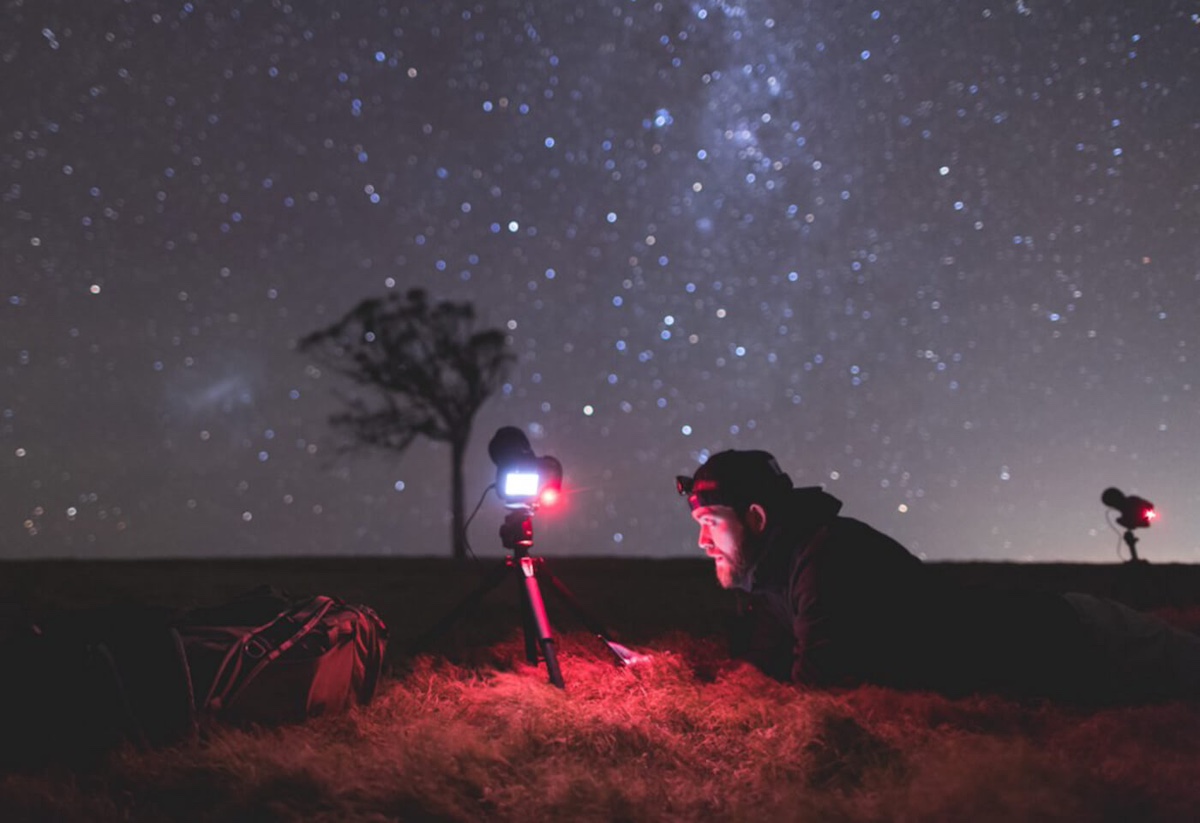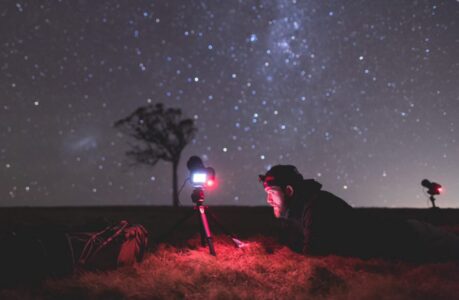Astrophotography, the art of capturing celestial wonders through the lens of a camera, has become increasingly popular in recent years. Enthusiasts and professionals alike are venturing into the night to capture stunning images of stars, planets, and galaxies. However, achieving those breathtaking shots depends on several factors, and one of the most critical considerations is the focal length of your camera lens. So what is the best focal length for Astrophotography
The Night Sky’s Allure
Before diving into the intricacies of focal length, let’s take a moment to appreciate the allure of astrophotography. The night sky has always fascinated humanity, and with the advent of digital cameras and advancements in technology, we can now capture its beauty like never before. From the Milky Way stretching across the horizon to the mesmerizing dance of the Northern Lights, the possibilities are endless.
To embark on this journey, you need the right gear, knowledge, and a clear understanding of how focal length impacts your astrophotography results.
Focal Length Explained
Focal length, often expressed in millimeters (mm), is a fundamental aspect of any camera lens. It determines the lens’s field of view and how objects are magnified in your photographs. Understanding the relationship between focal length and astrophotography is crucial for achieving the best results.
The Basics of Focal Length
To put it simply, a shorter focal length provides a wider field of view, allowing you to capture more of the night sky in a single frame. On the other hand, a longer focal length results in a narrower field of view, but it magnifies objects, making them appear larger and closer.
In the world of astrophotography, both options have their advantages and drawbacks, and choosing the right focal length largely depends on your specific goals and the celestial objects you wish to capture.
Wide-Angle Lenses: The Versatile Option
Wide-angle lenses, typically with focal lengths ranging from 14mm to 35mm, are a popular choice among astrophotographers. Here’s why:
- Capture the Milky Way: Wide-angle lenses are perfect for capturing the sprawling beauty of the Milky Way galaxy. With a wide field of view, you can include more of the night sky in your shot, enhancing the sense of awe and wonder.
- Ideal for Star Trails: If you’re interested in creating mesmerizing star trail images, a wide-angle lens is your best friend. The expansive view allows you to capture the entire arc of star trails in a single frame.
- Ease of Use: Wide-angle lenses are forgiving when it comes to tracking stars and minimizing star trails. Their shorter focal lengths are less prone to capturing unwanted motion blur.
- Landscape Inclusion: These lenses allow you to include terrestrial elements, such as mountains, trees, or landmarks, in your astrophotography compositions, adding depth and context to your images.
The Drawbacks
While wide-angle lenses offer many advantages, they are not without limitations:
- Limited Magnification: If you want to focus on specific celestial objects like planets or distant galaxies, wide-angle lenses might not provide the magnification you need. These lenses are better suited for capturing the grandeur of the night sky as a whole.
- Distortion: Some wide-angle lenses can exhibit distortion at the edges of the frame, which may require correction during post-processing.
Mid-Range Focal Lengths: Versatility with Detail
Mid-range focal lengths, typically ranging from 35mm to 85mm, strike a balance between wide-angle and telephoto lenses. They offer versatility and can be a great choice for astrophotographers looking to capture various celestial subjects.
- Zoomed-In Detail: Mid-range lenses provide a moderate level of magnification, making them suitable for capturing detailed shots of the moon, planets, and individual deep-sky objects.
- Portability: These lenses are often more compact and lightweight than telephoto lenses, making them easier to carry and set up for a night of astrophotography.
- Astro-Landscapes: You can still include some terrestrial elements in your shots with mid-range lenses, although not as much as with wide-angle lenses. They strike a balance between showcasing the night sky and the surrounding environment.
The Drawbacks
While mid-range lenses offer versatility, they may not excel in specific scenarios:
- Limited Field of View: If you’re aiming to capture expansive views of the Milky Way or create star trail images, mid-range lenses might not provide the breadth you desire.
Telephoto Lenses: Closer to the Stars
Telephoto lenses, with focal lengths typically exceeding 85mm, are designed to get you up close and personal with celestial objects. Here’s why astrophotographers opt for telephoto lenses:
- Detailed Celestial Objects: Telephoto lenses excel at capturing the fine details of celestial bodies, including planets, nebulae, and galaxies. They allow you to photograph objects that are too small or distant for wider lenses.
- Isolate Distant Subjects: If you want to isolate a specific star cluster or galaxy from light pollution or other distractions, telephoto lenses are your best choice.
- Compressing Elements: Telephoto lenses have a unique ability to compress the apparent distance between objects in your frame, creating stunning compositions of celestial objects in the night sky.
The Drawbacks
While telephoto lenses offer exceptional magnification, they also come with some challenges:
- Narrow Field of View: The limited field of view can be a hindrance when trying to capture expansive celestial phenomena like the Milky Way or meteor showers.
- Complex Tracking: Due to their narrow field, telephoto lenses require precise tracking to prevent star trails. This can be more challenging and may necessitate specialized equipment.
The Right Choice for You
Now that you understand the characteristics and advantages of different focal lengths, how do you choose the best one for your astrophotography endeavors? It largely depends on your goals and preferences:
Capturing the Milky Way
If your primary objective is to capture the grandeur of the Milky Way, wide-angle lenses in the range of 14mm to 24mm are your top choice. They allow you to include more of the night sky in your frame, creating stunning compositions.
Exploring Deep-Sky Objects
For astrophotographers interested in capturing detailed images of distant galaxies, nebulae, and star clusters, telephoto lenses with focal lengths exceeding 85mm are essential. These lenses bring faraway celestial objects closer and reveal their intricate details.
Balancing Versatility
If you’re looking for a versatile option that can handle a variety of astrophotography scenarios, mid-range focal lengths in the 35mm to 85mm range are your best bet. They strike a balance between capturing detail and showcasing the surrounding landscape.
The Role of Camera Sensors
It’s important to note that the choice of focal length also interacts with your camera’s sensor size. Cameras with smaller sensors may require shorter focal lengths to achieve the same field of view as cameras with larger sensors. This consideration adds another layer of complexity to the decision-making process.
Full-Frame vs. Crop Sensor Cameras
- Full-Frame Cameras: These cameras have larger sensors and provide a wider field of view with the same focal length compared to crop sensor cameras. As a result, wide-angle lenses may offer even wider vistas on full-frame cameras.
- Crop Sensor Cameras: Cameras with crop sensors have smaller dimensions, effectively cropping the image and providing a narrower field of view for a given focal length. This can be advantageous for telephoto astrophotography.
Aperture Matters Too
While focal length is a crucial factor in astrophotography, the lens’s aperture size also plays a significant role. A wide aperture (represented by a low f-number, e.g., f/1.4) allows more light to enter the camera, making it easier to capture faint celestial objects and reducing exposure times.
Many astrophotographers prefer lenses with wide apertures, especially when photographing the night sky. These lenses can collect more light and reveal intricate details in celestial subjects.
Consideration for Light Pollution
Another factor that influences your choice of focal length is light pollution. If you’re shooting in an area with significant light pollution, such as a city or urban environment, you may need to adapt your focal length accordingly.
- Wide-Angle for Light Pollution: In light-polluted areas, wide-angle lenses can capture more of the sky, helping you frame your shot while minimizing the impact of light pollution. They are excellent for cityscape astrophotography.
- Telephoto for Dark Skies: When shooting in remote, dark-sky locations, telephoto lenses can reveal the true beauty of deep-sky objects without interference from light pollution.
The Role of Tracking and Stacking
Regardless of your chosen focal length, achieving long-exposure astrophotography often requires specialized equipment, such as equatorial mounts and star trackers. These tools compensate for the Earth’s rotation, allowing for longer exposure times without producing star trails.
Additionally, stacking multiple exposures can significantly enhance your astrophotography results. By combining several shorter exposures, you can reduce noise and reveal more details in your images.
Post-Processing Magic
Post-processing is an integral part of astrophotography. Regardless of your chosen focal length, you’ll likely need to perform some post-processing to bring out the best in your images. Techniques such as noise reduction, contrast adjustment, and color correction can make a significant difference in the final result.
Best Focal Length for Astrophotography
Astrophotography offers a mesmerizing glimpse into the mysteries of the universe, and choosing the right focal length is a crucial step in capturing its beauty. Whether you opt for a wide-angle lens to showcase the grandeur of the night sky, a telephoto lens to reveal the intricate details of distant celestial objects, or a versatile mid-range lens, your choice should align with your specific goals and the conditions in which you shoot.
Remember that your camera’s sensor size, aperture, and the presence of light pollution also influence your astrophotography experience. Armed with the knowledge of how focal length impacts your images, you can embark on your journey to capture the cosmos and share its wonders with the world.
Astrophotography is a captivating pursuit that bridges the gap between science and art, offering us a unique perspective on the vastness of the universe. So, grab your camera, choose your focal length, and set out to capture the stars. The cosmos awaits your creative eye and technical skill, ready to reveal its secrets in breathtaking detail.
Now, it’s time to prepare your equipment, find the perfect location, and let the night sky inspire your astrophotography journey.
For more information on astrophotography equipment and techniques, be sure to check out these valuable resources:
- Astrophotography Tips for BeginnersThis link provides valuable tips and advice for those new to astrophotography, helping beginners get started on the right foot.
- Choosing the Right Camera for AstrophotographyLonely Speck offers insights into selecting the best camera for astrophotography, considering factors like sensor size, low-light performance, and more.
- Advanced Astrophotography TechniquesThis article delves into advanced techniques for astrophotography, including stacking, tracking, and post-processing, to elevate your skills.
- International Dark-Sky AssociationThe International Dark-Sky Association is a valuable resource for understanding and combating light pollution, which can significantly impact astrophotography.
- Milky Way Photographer’s GuideLonely Speck’s comprehensive guide offers insights into photographing the Milky Way, including lens selection, camera settings, and location scouting.

